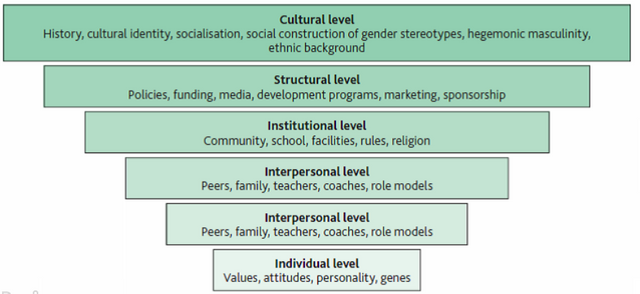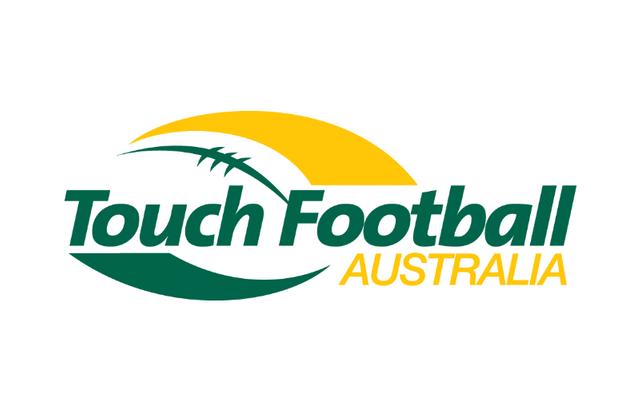Sociology - Constructs in a Sporting Environment
Sociology is stated to be, by sociologist Ashley Crossman as; the study of human social behaviour, especially the study of the origins, organization, institutions, and development of human society.
Sociology plays a major part in sport, in all levels of performance from your junior club member, to professionals athletes. Today we will cover all barriers and boundaries that contribute to someone’s participation in sport. Furthermore this we will be focusing on how the sport of touch football overcomes equity of access issues suggested by Peter Figueroa.
Peter Figueroa created a framework which covers the five levels that contribute to people’s involvement in sport. The five sociological levels at which issues of equity operate and that society promotes and sustains, included by Figueroa are:
- Cultural level
- Structural level
- Institutional level
- Interpersonal level
- Individual level

Within these separate levels there are specific issues of equity that influence participation in sport. They are gender, age, race, socioeconomic status and disability. These can be broken down into social boundaries.
- For gender, people (more often women than men, in modern western civilisation) can be under represented and underfunded for their chosen sport.
- Age is based on not as many options for older members of society to participate in sports they are physically able to.
- Race is more of a broad topic it refers to discrimination and exclusion of someone because of their race and also sport exposure is different in different races.
- Socioeconomic status is a person’s ability to fund their chosen sport, whether it be paying for equipment or paying for travel and sport trips.
- Finally for people with a disability they are often unable to participate physically or mentally in a sport, this really limits their options in choosing a sport.
Sociology in Touch Football
A good example of an equitable sport is Touch football. Touch is big on emphasising that it is a sport for all, no matter who you are you can play touch football. Touch Football Australia promotes this by running many social competitions, mixed competitions and competitions for all ages. The fact that touch can be played at an elite level or at a very casual level, leaves it able to appeal to many people. Touch Football Australia has tried to overcome many of the sociological issue that prevent people from participating in sport.

For example Touch Football Australia has overcome the gender issue by creating female, serious and causal competitions along with casual mixed competitions. They have also overcome the issue of age by offering both very young and very old people the opportunity to participate in different social competitions. In relation to the issues regarding children and adolescent participation in sport, touch football addresses the majority. Touch football offers a fun way to keep fit and healthy, which is really what most young people look for. The sport acts as a good social outlet as it has causal and serious competitions where people can socialise and make new friends.
Touch Football Australia does try and incorporate the sense of acceptance into its sport; however like all sports not everyone is accounted for. Casual completions are generally open and affordable to all people, however is someone wanted to further their skill in touch a whole range of expenses come into place. To participate in serious teams players will need to buy boots, jerseys and often pay for trips to verse other teams. This option is not always available for every person as their socioeconomic status may prevent them from paying the additional costs. In addition to competitive touch competitions costing extra money, the sport of touch football does not have a very open format to support people with a disability. This is understandable because touch required a lot of movement so people who are physically disabled would not be able to play the game at any respective level.
The five sociological barriers of Figueroa’s framework that are the; structural level, cultural level, institutional level, interpersonal level and individual level, affect every person in their sporting career. They are relevant in all forms of sport being, casual to competitive and are widely apparent in the sport of touch football. Without the influence of these barriers in sport many people would not have the opportunity to participate in the sports that they do today.
~ Thanks for Reading ~
Checkout my other posts: @benzene
Any sports games develops socialality in the humans which is most important to the our society .
Resteem Bot Service ▶ ▶ promote your new post ▶ ▶ Send 0.400 SBD To @stoneboy And Your Post Url On Memo ▶ ▶ Resteem Your Post To 9500+ Fllowers With 2 Accounts
This post has received a 1.67 % upvote from @booster thanks to: @benzene.
You got a 35.90% upvote from @minnowvotes courtesy of @benzene!